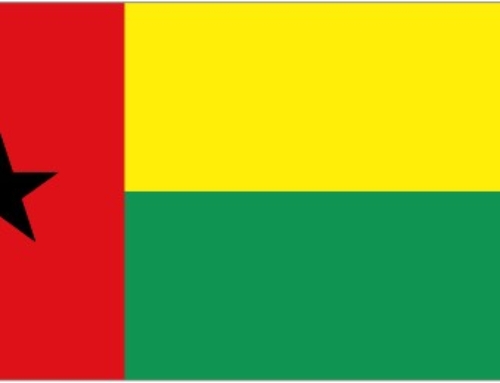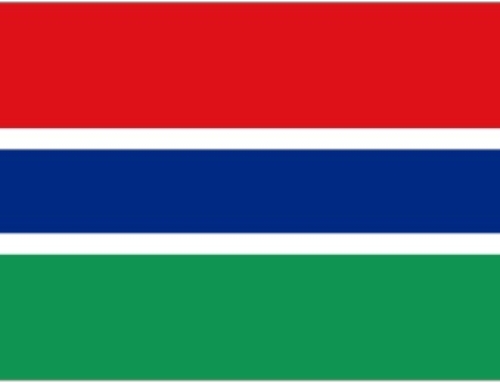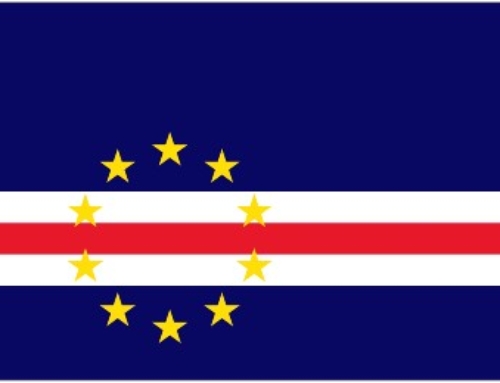
Kotor, Montenegro
Kotor itself seen from the sea is like looking into 15th Century sea-faring lands with its massive sea walls, almost scary in the dark bleakness that would frighten off any potential past invader. The city hides a long, precarious hike up the steep side of the mountain hanging over the town to a church and castle up high. Kotor is full of alleyways, ancient buildings at every turn and the most captivating squares. Medieval Palaces and historic churches are everywhere just inside the several fortified city gates. The bay is so deep, ocean going liners can reach the port of Kotor !
I visited here as part of my 3 week road trip I did to see parts of Montenegro, Croatia and Bosnia-Herzegovina by hire car from Podgorica, Montenegro.
This was combined with crossing the border into Croatia and also Bosnia Herzegovina, eventually returning to where it all started.
See below for the other destinations on this trip. Travelling by car between these places was actually one of the best car trips I have done and so easy. Road conditions were good, traffic light but do remember to get the necessary car insurance upgrade from the hire company to take it across the borders.
Check beforehand if they permit it, tell them and get the stamps etc put on the documents as all border police in the Balkans do check these documents.
Budva to Kotor road trip
I had seriously misjudged my timings between cities on this trip.
I somehow imagined Montenegro as being the size of say ….UK or France …. when in fact it is about a quarter that size, slightly less than Wales in fact.
The good side to this however was that with a car I could leave one place and be in the next within an hour usually. If I got there before check in time I could park the car, leave my luggage safely in it and explore the area. This actually gave me so much more time to explore and at a slower pace which really made the venture much more calming.!
In the case of the Budva to Kotor road time, it is about 30 mins (as long as you don’t take a wrong turning!).
The route was remarkably well maintained, driving standards good and with only a bit of drizzly rain at one point, it was a breeze to drive it. The road signs were actually quite clear and informative and in fact I didn’t end up taking any wrong roads on the whole 3 nation trip. I was feeling chuffed with myself already.
Leaving Budva, the route immediately hugged the coastline, as it did on my Sutomore to Budva route the day before. Yet again I was aware of being distracted by the beautiful views across the inlets and over the shimmering sea. “Keep your eyes on the road” was my catchphrase for this journey and probably for all the others too!
Majestic, barren mountains to my right, seashore and a rocky coastline to my left, I was beginning to actually enjoy this driving game. Better than the urban landscape I am used to seeing on my driving in the UK.
I was aware that I would be passing through another tunnel through the mountains that separate Kotor from the coast route .
Imagine that, never driven through a mountain road tunnel in my life and here I was driving through my second one in the course of a few days.
The tunnel, which is 1.6 km long, connects Kotor with the Adriatic coastal road and the rest of Southern Montenegro. It passes under Mount Vrmac, hence its name and takes a huge chunk of time off the journey between the two places. The old route is a curvy, small road that passes over the mountain itself. So glad I didn’t have to do that.
Where to stay in Kotor.
This s a good question, as the choice depends on what you want to do and experience in the area.
There are many hotels within the Old Town fortified walls area. These are all located in historic buildings and thus you may encounter a more charismatic room with exposed stone walls and beams but they may be smaller and without lifts. They are definitely much more expensive too, but everything you need to see and eat at would be on your doorstep.
Something else to consider here (and the reason why I didn’t stay within the walled area), is that the walled area is pedestrianised. It wants to keep streets clear for tourists to meander without fear of noisy/cumbersome cars and to be honest most of the streets would not accommodate vehicles. It thus retains a unique atmosphere.
Outside the city area is the surroundings near the Marina and just past the river on the opposite side of the city. Here tend to be smaller, more B&B styled places, (with street or private parking). They are mostly within 10-15 mins walk of the city walls and there is even regular bus routes plying the nearby roads if you can work them out.
Then there is the area beyond Kotor itself, on the opposite bank of the fjord or further along the shoreline towards Perast. Here is great for the quietness, and ease of parking and there are often nearby bars and restaurants to keep you entertained (probably a bit less touristy too). You would need a car/bus/cycle to get in/out of Kotor and park at the numerous carparks just outside the centre.
Where I stayed in kotor
I checked out the area outside the city walls and any place that also had free private parking. I found one place that was offering a great rate, had good reviews, looked good and offered free private parking. It included breakfast, which many places didn’t and it was within 10 mins walking of the walls. It looked ideal so I booked it.
Villa Panonija
The hotel even sent me driving direction that included pictures of what to look out for on road turnings etc. This was invaluable and so easy to follow that I didn’t get lost as I navigated the Dobrota area of Kotor that it was situated in.
Driving down the side road to the hotel it reassured me that this would be a quiet place. There were even several bars and restaurants just round the corner that I passed on my way. Still looked ideal. Click here for hotel website. It is on most online agencies too
I was greeted by the host, a middle aged lady and the big guest house was a kind of large villa and had a homely traditional style and feel to it.
I had a one bedroom suite as I saw that a single room here may be a bit small for me. The bedroom was stylish and modern and the adjacent separate sitting area with tv was great also. I was surprised at the large size of the suite as the exterior makes the house look smaller than it actually is inside.
My lounge area even had a small balcony that just about looked over the rooftops to the fjord/ria in the near distance.
The bathrooms were a little dated and had not been renovated when the rest of the room was, but it was perfectly clean and functional.
My first night here, there was an almighty storm, a real tropical one with massive thunder and lightning and a huge downpour. It was actually a little scary as I was on the top floor and so felt a bit exposed. It did knock out the wifi from about 11pm till the morning so I decided to have an early night, ready for the next day. All was restored by breakfast and the host did explain that violent storms do disrupt the wifi beyond their control.
Breakfast was good and they serve meals in the evening but I ate in town before returning back each time so didn’t get to use the dining room.
I would recommend this hotel – if you get a good rate it is exceptional and the walk to town is minimal.
My two days in Kotor
Kotor is a real throw back to the 14-16th century in its atmosphere and buildings.
The whole of the big area inside the fortified city walls has been preserved in its entirety. It is truly like walking back in history and the fact that there are no cars makes it even more impressive. Yes the interiors have been converted into restaurants, hotels, souvenir shops etc but it has been done so expertly.
You can wander the streets with or without a map and just gaze at what you are seeing in amazement.
I was there off-season so many of the restaurants etc were closed or did not have outdoor seating. It was also cold (and rainy) at the time of my visit, hence the mistiness of many of my pics. For me this was an advantage.
I had looked up on Google maps and went to street view to see that in summer many of the squares are totally taken over by huge awnings and massive umbrella stands for outdoor eating. This seriously blocked the views of the beautiful stone block buildings and would simply get in the way of any decent pic. I didn’t have that problem in my off-season visit.
There were a lot less bodies walking the streets too, so I felt so privileged to get uninterrupted views of the glorious architecture. I would even go so far as to advise going off season to avoid the crowds and overcrowded streets full of tables, chairs and massive parasols.
I left the hotel after a down pour and it had stopped for the day. The city was wet as the pics may show, and probably quieter than normal for this reason, so here is my report
Kotor City Walls
My first sight of the Old Town area was these walls – and they more than surprised me in their height, obvious thickness and domination over the landscape.
Set on the river’s edge with a back-drop of the mountains, the dark walls made my jaw drop. They actually looked scary and foreboding. I had not seen fortified defensive walls of this size before.
These city walls were built by the Venetians (just like the ones surrounding Budva, were I had been the day before). They are built along the river but also facing the huge bay in front. The huge Kampana bastion featuring as a corner defence works, stood out against the waters edge
Some have called this bay (Kotor bay), the southern-most fjord in Europe, but it is in fact a ria, that is, a submerged river canyon. The mountains behind would have been impregnable to an armed land force and the vast water front another natural defence.
To me this view just screamed Game of Thrones – yep I keep referring to it and I’m sure some of it must have been filmed in Kotor as it just reflects the architecture of the series too well.
I walked past these impressive Medieval fortifications towards and entrance that I knew was further along the water fornt. The quayside next to me was where the big ocean going liners dock in high season. I had seen pics of this and I shuddered at the ugliness of a modern liner next to these ancient walls.
The nearby yacht marina seemed much more in keeping with this ancient city.
Each time I looked up at the fortifications I was reminded of Kotor’s setting against the sheer drop of the grey/brown speckled mountains behind it. I kept thinking of rock falls coming down onto the city – was it just me thinking this?
Resisting the temptation to enter the city via this impressive gateway I walked further along to the Gurdic Bastion entrance. Here were the remnants of the moat in front of the defensive wall and another ceremonial entrance through the walls.
This one was less decorative and imposing than I found the others and it was almost dungeon like in its darkness and plainness, going through a long semi-tunnel before exiting inside the walls.
Inside Kotor’s city walls
Let’s have a little history lesson now before we go further into exploring the city. This may give an insight into what we see next.
Kotor was here from the Greek times and its present name derives from the Greek for ten gates – probably the number of fortified gates at the time. It was known by the Romans in 168 BC and even had a fortress built here by Emperor Justinian in 535 AD.
Plundered by Saracens in 840 AD, then taken over and re-fortified in the 10th Century it prospered and grew and even took back its old Greek name after the earlier re-naming by the Romans. Byzantines and then Serbs conquered it, then Christian Monks set up monasteries in the 13th as it grew into an independent city state.
From the 1400’s it was under Venetian rule, who built the massive defences we see today but suffered earthquakes, plagues and yet more assaults.
Hapsburgs, Napoleon, Russians and even the British then had a hand in overtaking and running the city. WW1 put it under Austro-Hungarian rule and in WW2 the Italians captured it. Well quite the history and now the whole city is protected as a UNESCO World Heritage Site.
My entrance into the city – I promise I was not invading it after all that history – led me to my first of many high, stone-built, old buildings.
Od Brasna Square area
I now understood the Venetian influence on the architecture of the city. They definitely had an Italian look in their design, balconies from Romeo and Juliet and that symmetrical, rectangular shape to the shuttered windows.
The buildings looked quite blackened in areas as if they needed a jet wash to rid them of a lichen appearing on ther surface walls. This however did them an even older atmosphere and look but it did detract from the beauty of some buildings .
From here it was a walk along a narrow lane, passing by various small tourist shops selling somewhat more upmarket goods – jewellery, watches, shawls etc. The area had a refined feel and definitely not geared towards the beach and sun tourist.
I emerged from the lane into what is the biggest square (albeit an L shaped one) in Kotor.
Here the ground was renovated and re-flagstoned and the buildings a more beige colour of stone.
Square of the Arms, Kotor
To my left stood the large open Sea Gate that I passed by on the outside. To the right was the famous low clocktower in all its splendour. Ahead of me was the long run of a picturesque open area.
On one side was an assortment of slightly different heighted three storied buildings, with again slightly different styles. They however, still conformed to that square, solid, stone-faced, Italian design I had seen earlier.
On the left was a long run of what appeared to be a two storey garrison style building with a balcony that ran the whole length of the building on the top floor.
Restaurants lined the ground floor and I imagined this to be the throbbing heart of the tourist centre on a balmy evening in high season.
Walking around the town actually involves walking down what are more logically called lanes or wide alleys. They often suddenly open out into small squares (a bit like Venice- there’s that connection again!) and then back into a lane in the gap between two houses.
The whole inner city is like this in layout. I hated to think what it would be like on a crowded high season day.
So, off I went down some lanes to get to where I wanted to be next.
Those creamy beige symmetrical buildings with lintelled window came into view again and at various points palm tress adorned a corner or a square.
I could now see the mountain back drop to the city much more clearly and knew I was at one end of the city.
Cathedral of Saint Tryphon, Kotor
This had been mentioned as a gem of a building and the interior as being somewhat special.
On arrival I noted the height of the twin belfry towers but it actually seemed a little plain on the outside. Maybe the interior would make up for that. I approached the entrance, tugged at the door, but it was locked, Surprised as it was a Sunday I imagined it to be open all day, but no. Well and truly closed.
I know it is low season but surely churches don’t have a low season for attendees?!
More walking down narrow streets followed my unexoected departure from the Cathedral.
My route followed along a lane that was almost parallel to the mountains and ended up at the Church of St. Mary Collegiate. Opposite was the entrance alley to the mountain trek to see the Fort and church way up high.
Mountain trek to Kotor Fort
If you do want to take the free walkway up to the fort for amazing views over the city then the lane with the double open arch over it, facing towards the mountainside, is the entry area. The walk takes about an hour to get to the fort and is a fairly strenuous hike up the mountainside. Wear stout shoes and take water as you will need both!
I did not have the time or inclination for such a trek. It was late in the afternoon so I was concerned what I would actually see from above in the already fading light. There was also approaching dark clouds that foretold rain was on the way again.
There is another route via the old road up the mountain but you have to pay 8 Euros to use this route. Many have said it is not better both condition-wise or exertion-wise, so take the free one.
I had seen so many churches already on my trip and so wanted to condense church visits to a couple here – there are a lot of churches to see!
As I had missed out on seeing the interior of the Catholic Cathedral, I decided I would take a peep inside my second choice, an Orthodox Church that many had recommended.
Saint Nicholas Church, Kotor
The exterior area of the church was a small pretty but irregular plaza. It had another smaller Orthodox Church on the same plaza but that one seemed closed as no-one was going into it.
This time the church I wanted to see was definitely open and surprisingly large amounts of people were entering and leaving as I approached. The frontal area is an eclectic mixture of churches, shops, hotel and residential building. They all sit at angles to each other, forming a uniquely shaped open area.
The floor in the plaza was flagstoned in alternating shades of white and rose coloured slabs. It gave a checkerboard design to the floor, a sight that seemed a little out of place in such a solemn area.
The interior was much plainer than I was used to in an Orthodox church. No large painted murals reaching to the ceilings. Instead there were decorated panels on the altar and several antique portraits of saints in large frames.
The flooring reflected the checkerboard design of outside – was that intentional I wondered.
I spent a while wandering the interior to mentally take in the artefacts and watch worshippers come and go. This church was opened in 1919 on the site of the previous one that had burned down earlier.
I had now seen all I planned to see inside the city walls and I was now heading toward the river gate out.
River gate on City walls
A walk from the church, down a couple of winding lanes, led me to the River Gate or the Skurde Gate. It is named after the river that flows from the mountains past the city walls forming its grand moat.
These were a classic style of gate with what seemed a porticoed entrance and bridge over the fast flowing river. There were foundations of edifices in the river area near the walls (a mill perhaps?). Torrents of green dark water formed white waves as it gushed over rapids and channels.
The walls seemed to blend in with the colour of the mountain rock. Yet again I was reminded of how the city sits right up against the almost cliff-like formations of the mountainside. Complimenting in colour but contrary in angles – these walls were the most massive and impressive I had ever seen.
I wondered if the famous walls of Dubrovnik, where I was headed in a few days, would be more spectacular. Read my Dubrovnik post to find out!
Well, that was Kotor seen and marvelled at.
It was a surprise. I wasn’t expecting such a completely Medieval and perfectly restored and maintained architectural beauty. It was as if they had built it a few years ago in that style but it was actually all genuinely old. The streets were atmospheric, the buildings often grand and majestic and its setting against a mountain in a water ria was just amazing.
This road trip was turning into one of my best trips ever. I couldn’t wait to see what Herceg Novi, Dubrovnik and the other places planned in were going to be like
Below are some related posts on nearby places to visit. Click on the pic to view.



























































Such a beauty! This area is filled with historic architecture. It’s incredible to think that they’ve survived this long and still look just as beautiful! And it’s also a plus that everything can be seen and done by walking, which is just awesome!
Probably the most walkable city I’ve ever been to. The city (inside the walls) is totally pedestrianised and such a gem. I was thinking I was on a set of Game of Thrones most of the time!
Great post. It looks like you had this amazing place all by yourself.. even with cloudy skies and rain it looks beautiful. We love cities that are walkable like that.
Kotor is a great walkable city. The streets within the massive city walls are all pedstrianised, so that helps! The cloudy, misty weather after the huge rainstrom was a pity but I still got to see this wonderful place with no issues.
I absolutely love places with old town areas and fortified walls like this, especially when I can also find plenty of hidden little streets and alleyways to wander through. I’m not a GOT fan, but I can see that this would be perfect in the show. Like you I really think the mist adds to your pictures. I’m a big fan of visiting places slightly off season as I love having them to myself
Kotor is full of alleyways and small streets so it an ideal place for you to wander and explore. Its small enough that you don’t get lost without a map but big enough for there to be plenty to see at each turn of the route. Tahnks for your comments.
That sea wall and fortified city wall is so impressive. It’s definitely like you’ve stepped back in time. It’s unfortunate you appeared to have so much rain while you were there, but it didn’t slow you down from touring the old town. Great recommendation on the hotel too.
I had rain for 3 days on my car tour and this was probably the worst day – it just often made the pics dull and dark. It was still a fab trip though and Kotor was probably the highlight.
Big GOT fan so love all the street and places to explore, looks amazing!
I am a big GOT fan also so actually did enjoy walking around here inagining possible scenes from the series – nerdy but fun.
I’ve been thoroughly enjoying your posts on Montenegro and Kotor is no exception. What a stunningly beautiful – and wonderfully preserved – city. As ever, it was great to learn the history, particularly that the defences were constructed by the Venetians. I think we could happily spend hours wandering through the city, especially the city walls, and popping into churches (if they are open!). I didn’t know much about Montenegro but your posts have inspired us to add this to the places we really need to make plans to see.
Am so glad that I’m putting Montenegro on your radar – it certainly deserves it. It was a pity I couldn’t get better pic due to the mist and low light of the rainy time I had there. The weather, however did not deter me from loving this captivating mediaeval city.
I can 100% say I knew almost nothing about Montenegro before reading these posts. I agree, it looks like something out of Game of Thrones or Lord of the Rings. It has an eerie allure to it with the overcast skies. It’s nice, too, that everything seems so close to each other making it an easy road trip!
The rainy misty weather really did make getting decent photos a hard job. The low light and mist gave it a haunting feeling but also gave some atmosphere to the city. Glad I am bringing Montenegro to your attention. I do feel it is one of the most underrated and unexposed countries in Europe.
Having a car is definitely helpful for the reasons you gave, when you arrive somewhere you can explore while your belongings are secure. Those sea walls certainly are intimidating and before I even read your description, I was screaming “Game of Thrones”. I love the stone & brick streets and squares, so pretty, even in the rain. Great trip!
Am so glad you liked Kotor, it is certainly a Game of Thrones experience. I believe some scenes were filmed here but the whole city could easily be one massive stage for the series. I thought the same thing about the walls – I would not have wanted to an attacking force trying to surmount those fortifications!
I’ve not heard much about Kotor in Montenegro, but that’s why I’m here and reading your post! From your pictures I can imagine it to be a stunning coastal town sandwiched in between mountains and the serene Bay of Kotor. I didn’t know anything about its well-preserved medieval architecture and in parts Roman history – I can see why UNESCO certified it. The ancient city walls, historic churches, and charming cobblestone streets, plus the serene views of the Adriatic Sea, honestly what’s not to love? Thanks for sharing this interesting place blending history and natural beauty.
Carolin | Solo Travel Story
It is one of the most picturesque places in Europe I have visited and its walls, buildings, churches and streets are such a delight. It has missed mass tourism but that is now eroding as cruise ships have discovered it and regularly dock at its inland jetties- it is now getting famous so see it before the crowds swamp it.
I have yet to explore this hidden part. I have been hearing a lot of exciting things happening in Montenegro recently. Such a shame about the hovering mist and the grey clouds. I can imagine the ancient squares, ramparts and withered buildings shimmer in the sun and probably a dreamy postcard photo for everyone. Kotor here we come 😉 #flyingbaguette
Jan – https://flyingbaguette.com/
It’s a wonderous place to visit. The misty backdrops almost gave some shots a mystical look. Luckily the sun cam ooy later and I could get some good scenery shots.
The city walls in the dreary weather are intimidating but I know I would enjoy walking along them. I like that they keep vehicles out of the walled area, it feels more authentic.
I have really enjoyed this series and have learned so much from your posts. I look forward to visiting the area in the future
Lyn | http://www.ramblynjazz.com
The whole region is a beautiful part of Europe – it exceeded my expectations.
I love the hotel you stayed at – looks beautiful. I am a GoT fan, so I’d love to visit Kotor, but I enjoyed learning about the history of the area as I find that’s really important to understand what is going on around you. Sounds like I would enjoy doing your entire road trip!
Sounds like you should try it – I certainly loved doing it.
A road trip is always an adventure! I liked what I saw about the accommodation and the fact that it’s well located is definitely a plus for me, as I don’t have to think too much about getting around.
It’s funny that I have the same feeling you described, Kotor takes me back to GoT immediately.
I didn’t realize that the city had so many points of interest to explore, but I’ll certainly take your suggestions into account when I go there.
As a fan of GoT I loved the city. I heard that some scenes were filmed here but did not recognise anything obvious from the series.
The accommodation was remarkably reasonable and of a good quality for the price.